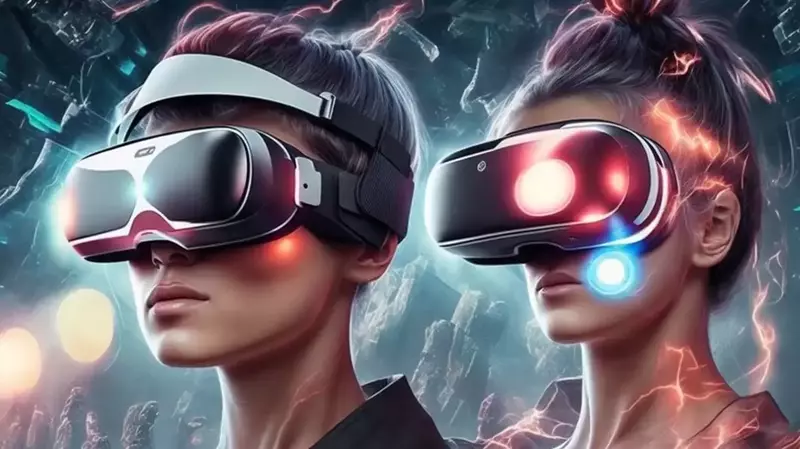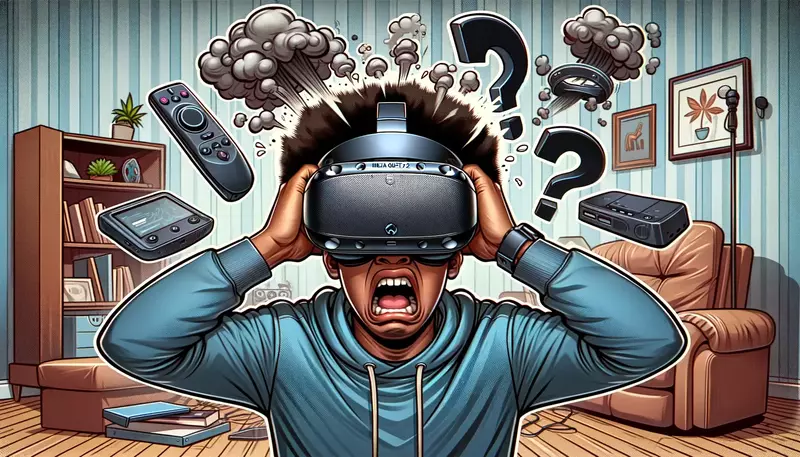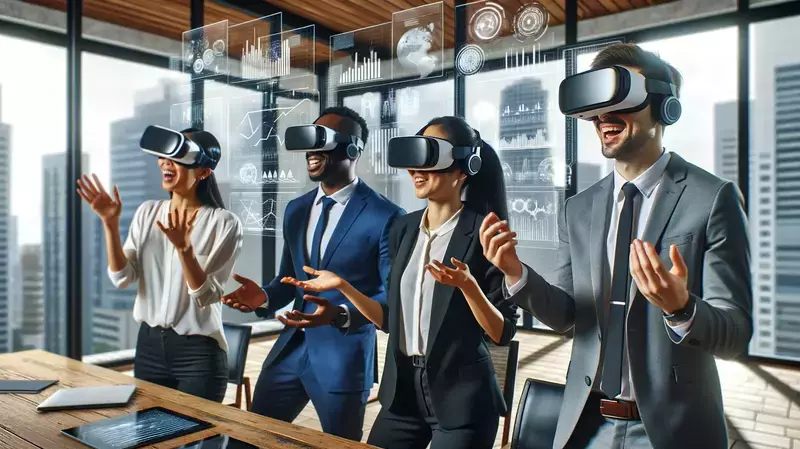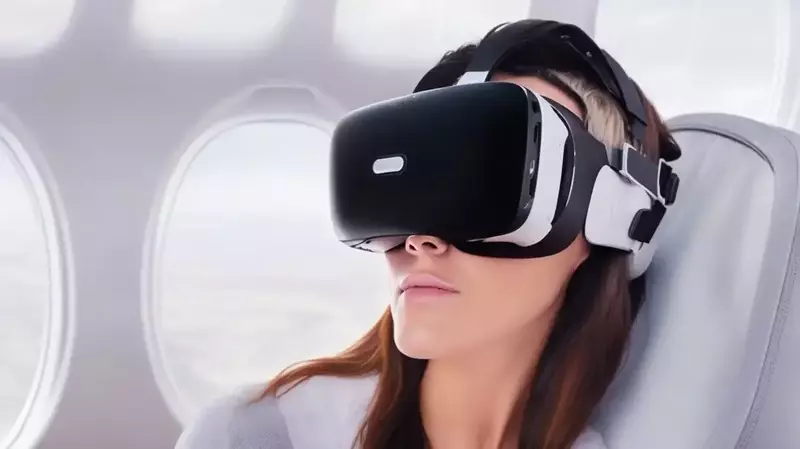This site contains affiliate links to products, and we may receive a commission for purchases made through these links.
Do virtual reality headsets damage your eyes? This has been a worry among gamers, adventurers, and those eager to explore the realm of virtual reality.
In this blog post, we will delve into the inner workings of VR technology to uncover any potential harm it may pose to our eye health.

What is Virtual Reality?
Virtual reality (VR) is like a magic portal that transports you to a computer-generated world. It’s like stepping into a dream where you can interact with everything around you.
VR is used in gaming, education, healthcare, and entertainment.
How Do Virtual Reality Headsets Work?
Virtual reality headsets provide a simulated experience by submerging users in a computer-generated world. They use several key components:
Display
The display presents the virtual world to your eyes. Most VR headsets use OLED or LCD screens with high resolutions and refresh rates for smooth visuals.
Lenses
Lenses create the illusion of depth within the virtual environment by focusing and reshaping the image from the display to appear three-dimensional when viewed through each eye separately.
Sensors & Tracking Systems
VR headsets track your movements accurately and translate them into corresponding actions within the game or application you’re using. This is achieved through sensors like accelerometers, gyroscopes, magnetometers, and external tracking systems like HTC Vive’s Lighthouse system.
Controllers & Input Devices
- Motion controllers: These handheld devices allow users to interact with their virtual environments more naturally by mimicking real-world gestures like grabbing objects or swinging weapons.
- Haptic feedback: Some controllers also feature haptic feedback technology that provides tactile sensations (vibrations) based on what’s happening within your VR experience – making it even more immersive.
- Voice commands & gesture recognition: Advanced VR systems may also incorporate voice command functionality or gesture recognition, allowing users to interact with their virtual surroundings using spoken commands or hand movements.
Audio System
VR headsets often include built-in headphones or support for external audio devices to provide full 360-degree surround sound.
By understanding how these components interact to create a VR headset system, you can make informed decisions on the best device for your needs while being mindful of potential eye strain risks from extended use.
Check out Oculus, HTC Vive, and PlayStation VR for some of the best VR headsets available today.
Potential Eye Damage from Virtual Reality Headsets
Virtual reality (VR) headsets offer an immersive experience, but prolonged use can lead to eye damage.
Let’s discuss the risks associated with VR headset usage and how they affect your eyes.
Prolonged Focal Distance
VR devices require users to maintain a fixed focal distance, which can lead to Computer Vision Syndrome (CVS). CVS symptoms include eye strain, dryness, blurred vision, and headaches after extended periods of screen time.
Blue Light Exposure
Excessive blue light exposure can cause disruptions in sleep patterns and potentially contribute to retinal damage over time.
Binocular Vision Dysfunction (BVD)
BVD occurs when the brain struggles to combine images from both eyes into a single coherent image due to misalignment or other issues with eye coordination while wearing a VR headset.
Dry Eyes & Discomfort
- Dry Eyes: Lack of blinking while immersed in virtual reality can cause dry eyes, leading to discomfort and irritation.
- Discomfort: Wearing a VR headset for extended periods may also result in physical discomfort due to the device’s weight and pressure on the face, potentially exacerbating eye strain symptoms.
Long-term Effects & Children’s Eye Health
Prolonged usage of virtual reality headsets may lead to myopia or other vision difficulties in the long run. Children’s eyes are more susceptible to damage from blue light exposure and focusing issues than adults’, so it is essential to monitor their usage closely and follow recommended guidelines for age-appropriate content.
Consequently, users should be cognizant of the potential hazards associated with extended use when engaging in VR activities to ensure they are not compromising their ocular health. By understanding these concerns and taking appropriate precautions when using VR devices, you can enjoy immersive gaming without compromising your eye health.
Key Takeaway:
Virtual reality headsets can cause eye damage due to prolonged use, including Computer Vision Syndrome (CVS), blue light exposure, Binocular Vision Dysfunction (BVD), dry eyes and discomfort. Prolonged usage may also contribute to myopia or other vision problems over time, especially in children who are more susceptible to damage from blue light exposure and focusing issues than adults. It is essential to monitor VR headset usage closely and follow recommended guidelines for age-appropriate content while taking appropriate precautions when using VR devices.
Preventative Measures to Reduce Eye Strain
To ensure a comfortable VR experience, it is important to take preventative measures to reduce eye strain. Here are some tips to help you avoid eye strain and discomfort while enjoying your VR experiences:
Create a Comfortable Environment
Make sure your VR room is well-lit, and your headset fits comfortably without causing any pressure points. Nobody wants a headache from their VR headset.
Adjust Your Headset Settings
Take the time to adjust your headset’s interpupillary distance (IPD) for optimal clarity and comfort. Trust us, your eyes will thank you.
Take Regular Breaks
Follow the 20-20-20 rule: every 20 minutes, take a 20-second break by looking at something 20 feet away. Take a breather and give your peepers a rest by stepping away for some time.
- Blink Frequently: Don’t forget to blink. It helps prevent dryness and irritation caused by staring at screens for too long.
- Adjust Screen Brightness: Make sure your VR headset’s brightness is just right – not too bright, not too dim.
- Maintain Proper Distance: Keep a safe distance between your eyes and the VR screen to reduce eye strain. Most headsets are designed with this in mind, but double-check just to be sure.
Eyewear Considerations
If you wear glasses or contacts, make sure your prescription is up-to-date before using a VR headset. Some headsets have options for accommodating eyeglasses, while others may require special inserts or adjustments. And if your eyes get dry during extended VR sessions, consider using lubricating eye drops.
By incorporating these preventative measures into your VR routine, you can enjoy all the immersive experiences you want without compromising your visual health. Happy gaming.
“Protect your eyes while enjoying immersive VR experiences. Follow these preventative measures to reduce eye strain and discomfort. #VirtualReality #EyeHealth”Click to Tweet
Alternatives to Traditional Virtual Reality Headsets
Concerned about eye damage from traditional VR headsets? Try these alternatives:
Augmented Reality (AR) Devices
AR overlays digital content onto the real world, reducing eye strain by not requiring close-up screens. Try Microsoft’s HoloLens or Magic Leap One.
Projection-Based Systems
Project images onto walls or surfaces instead of wearing a headset. Check out projection mapping installations for large-scale 3D environments.
360-Degree Videos and Photospheres
Experience virtual environments without risking eye damage through 360-degree videos and photospheres on Kuula or 360Cities.
VR Arcades and Location-Based Experiences
Visit a VR arcade or location-based experience center for short-term, high-quality equipment and multiplayer games. No need to invest in a headset.
Explore virtual worlds safely with these VR alternatives.
“Protect your eyes while experiencing virtual worlds. Try these VR alternatives – AR devices, projection-based systems, 360-degree videos and VR arcades. #VirtualReality #EyeSafety”Click to Tweet
FAQs in Relation to Do Virtual Reality Headsets Damage Your Eyes?
Is VR worse for your eyes than TV?
VR isn’t necessarily worse for your eyes than TV, but prolonged use can cause eye strain and discomfort, so take breaks and follow safety guidelines.
What are the dangers of virtual reality headsets?
Dangers include eye strain, dizziness, nausea, and tripping hazards due to limited visibility, so always ensure a clear play area and follow safety recommendations.
How do I protect my eyes from VR headset?
Protect your eyes by adjusting IPD settings, taking frequent breaks, blinking regularly, and maintaining proper hygiene by cleaning lenses.
Are VR headsets bad for children’s eyes?
VR headsets may harm children’s developing vision if used excessively or improperly, so supervise use and limit session durations as needed.
!! For more information about the different VR headsets on the market, check out this product specification list.
Final Thoughts
Virtual reality headsets may cause eye strain and related issues, but there is no conclusive evidence that they directly damage your eyes.
To reduce the risk of eye strain, take regular breaks, adjust the headset for proper fit and positioning, and practice good eye care habits.
Alternative options such as augmented reality or mixed reality headsets may be less taxing on your eyes.
Prioritize your health when using VR technology by being mindful of potential risks and taking necessary precautions to protect your eyesight.
Enjoy all that VR has to offer safely without worrying about whether or not do virtual reality headsets damage your eyes.

Espen
Espen is the Director of PursuitMeta and has written extensively about Virtual Reality and VR Headsets for years. He is a consumer product expert and has personally tested VR Headsets for the last decade.




Leave a Reply